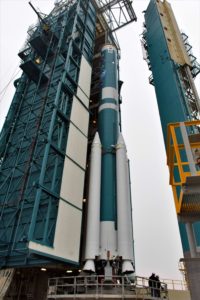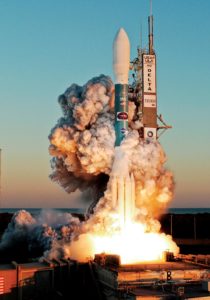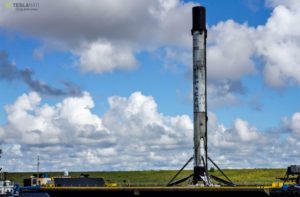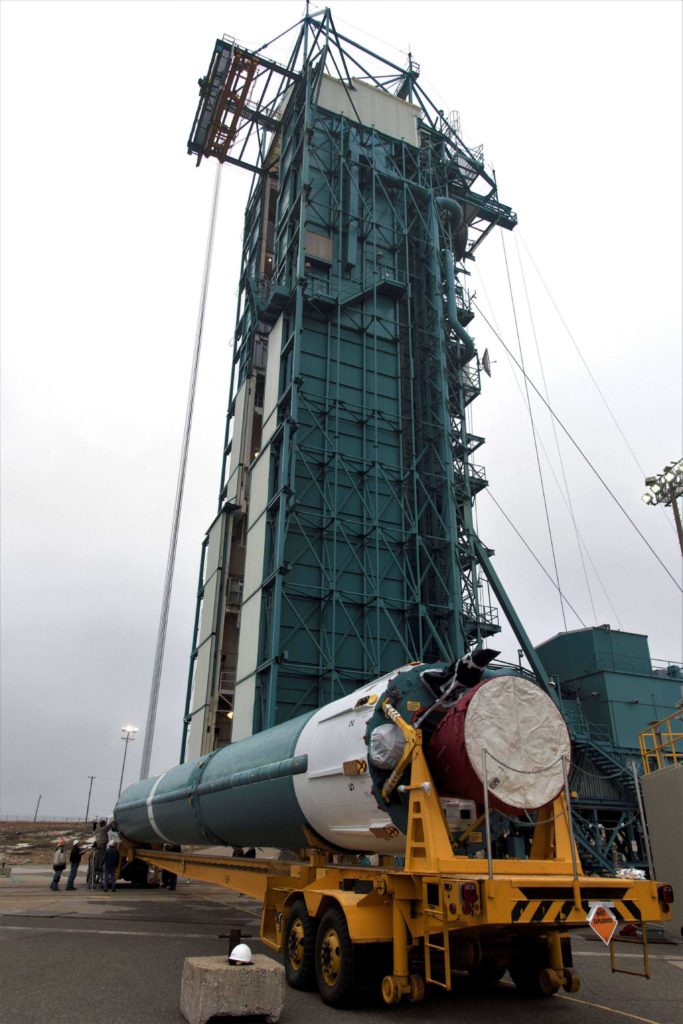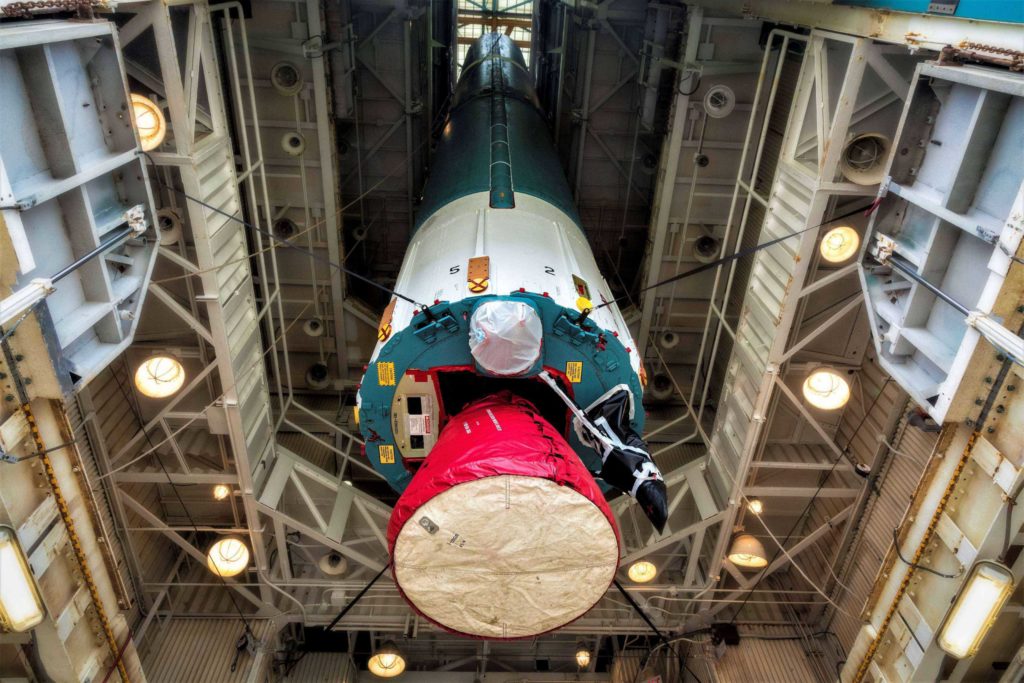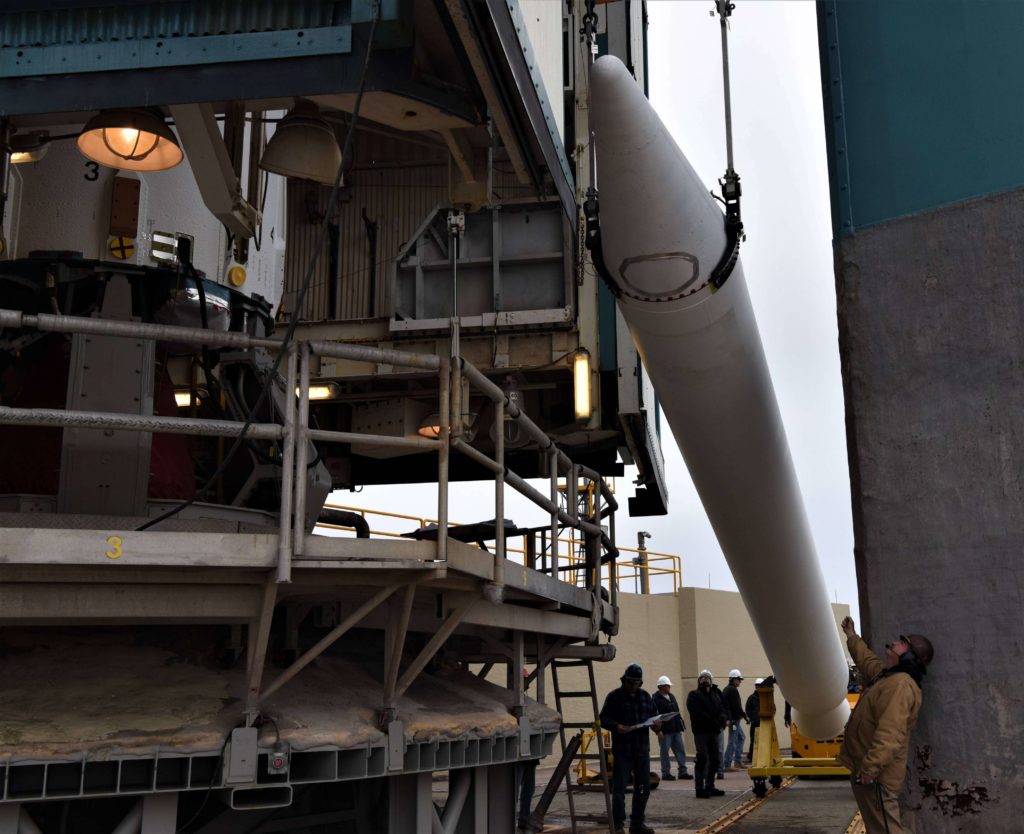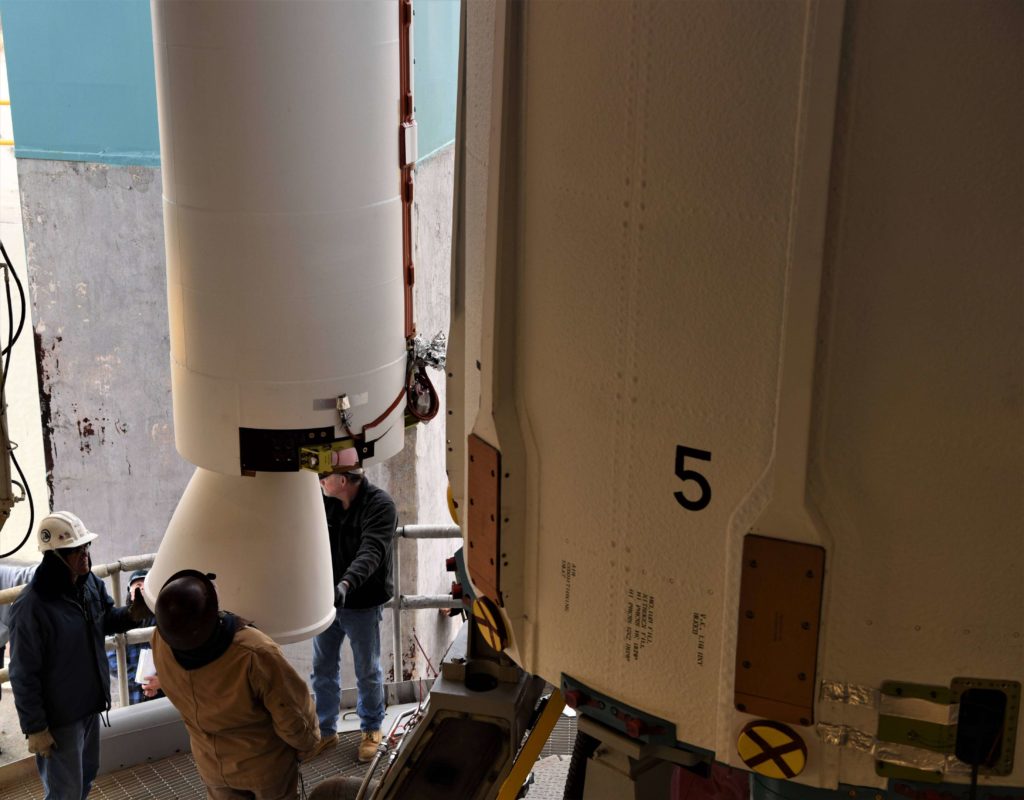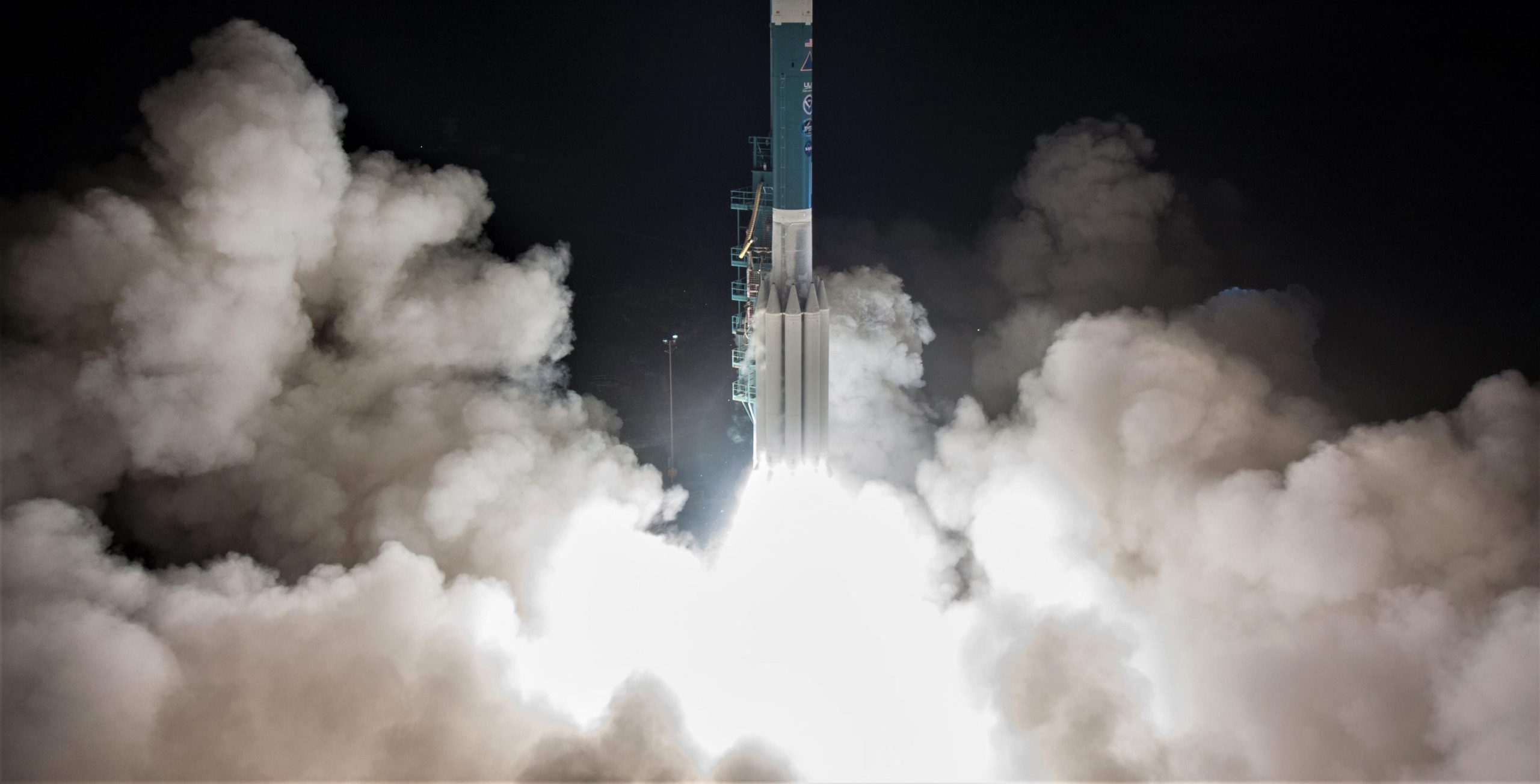
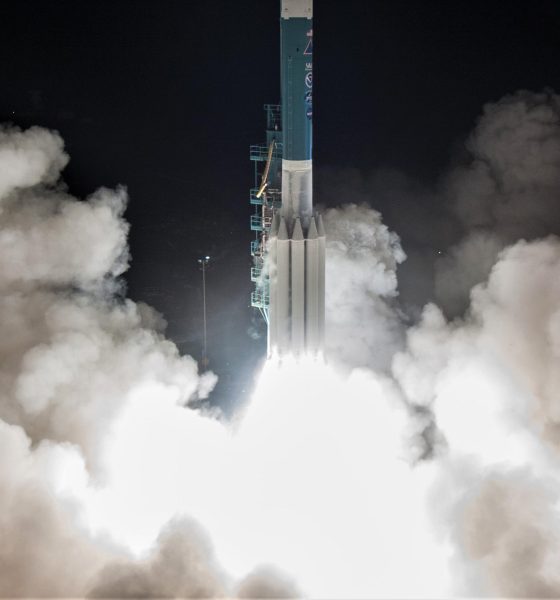
News
SpaceX competitor ULA readies for final launch of 30-year-old Delta II rocket
Long-time SpaceX competitor United Launch Alliance (ULA) is nearly ready for the final launch of its Boeing subsidiary’s Delta II family of rockets, culminating a nearly 30-year history mostly dominated by routine success.
If completed without failure, the launch of NASA’s ICESat-2 satellite – built to track global ice-sheet variation with a huge space-based laser – will mark Delta II’s 100th consecutive success and the rocket’s 153rd fully successful launch overall, an immensely impressive and laudable achievement regardless of the vehicle’s lack of competitive advantage in the modern launch industry.
A teary farewell to Delta II this weekend, so in the run up we're going to give her a send off with a trip down memory lane per the vehicle's evolution from Thor.
Standby for a 7,000 word (yep!) feature article from William Graham on Thursday, with a ton of cool info/old photos. pic.twitter.com/g43PS6kHcr
— NSF – NASASpaceflight.com (@NASASpaceflight) September 13, 2018
Shockingly tiny when compared with modern launch vehicles like Delta IV, Atlas V, and Falcon 9, Delta II measures roughly 39 meters (~128 ft) tall, 2.4 meters (8 ft) in diameter, and weighs 160 metric tons (~350,000 lb) when fully fueled, just over half as tall and significantly less than 30% as heavy as SpaceX’s Falcon 9.
Contracted by NASA in 2013, Delta II’s ICESat-2 launch cost the agency roughly $97 million (2013 USD), although the cost of launch has shrunk in relation to the satellite, which suffered at least $200 million of overruns and 12+ months of delays due to difficulties developing the spacecraft’s impressive space-based LIDAR system. For comparison, NASA contracted a Falcon 9 launch (for the TESS exoplanet observatory, launched in April 2018) from SpaceX for $87 million in 2016, while the USAF has secured several launch contracts with SpaceX for far more complex GPS satellite launches at a cost of almost exactly $97 million apiece.
- The final Delta II rocket is awaiting its last launch from Vandenberg Air Force Base this Saturday. (NASA/Randy Beaudoin)
- A Delta II Heavy rocket seen launching NASA’s THEMIS satellite in 2007. (NASA)
- Falcon 9 Block 5 booster B1049 returned to Port Canaveral today, ~60 hours after launch. Falcon 9 is dramatically cheaper than the aging Delta II. (Tom Cross)
Aging rockets, changing markets
Put simply, the contrast in capabilities offered for equivalent prices soundly demonstrates exactly why Delta II is being phased out. Although capable of better performance with a third upper stage and nine much larger solid rocket boosters (SRBs), that ‘Heavy’ variant of Delta II cost NASA an incredible $150 million per launch in 2009. For the versions of Delta II closer to $100 million per launch, the rocket is able to place 2500-3200 kg (5500-7000 lb) in low Earth orbit and not much at all to any higher energy destinations, which demand a third stage or a heavier rocket. At a comparable price (or much lower in SpaceX’s case), Atlas V and Falcon 9 are able to launch far larger payloads to far higher orbits.
This was by no means the case when Delta II debuted in 1989, and the McDonnell Douglas-built rocket readily earned its impressive reputation as a relatively reliable, capable, and (more or less) affordable launch vehicle compared alongside other rockets available in the ’90s. Delta II wound up as a ULA rocket (sort of) thanks to Boeing and McDonnell Douglas’ 1997 corporate merger, followed in 2006 by Lockheed Martin and Boeing’s cooperative formation of the United Launch Alliance. ULA thus operates Delta II, Delta IV, and Atlas V, all featuring multiple variants and very few distinguishing capabilities when compared amongst themselves.
- Delta II is trucked to the launch pad ahead prior to launch. (NASA)
- The business end of Delta II. (ULA)
- ULA technicians install one of four solid rocket boosters on ICESat-2’s Delta II launch vehicle. (NASA)
- ULA technicians install one of four solid rocket boosters on ICESat-2’s Delta II launch vehicle. (NASA)
The cost of maintaining all those highly duplicative rockets and unique factories and engineering expertise is fundamentally unnatural and reliant upon some sort of noncompetitive market forces (i.e. launch monopolies assured through “block buys” of multiple rockets from NASA and the US military), forces that have been mortally challenged by SpaceX’s reintroduction of competition to the American launch industry.
ICESat-2 is scheduled to launch on Delta II on Saturday, September 15th at 5:46 AM PDT/12:46 UTC. Stay tuned for more information on ICESat-2’s giant space LIDAR payload and mission goals, as well as Teslarati photographer Pauline Acalin’s photos of the fairly historic rocket launch.
For prompt updates, on-the-ground perspectives, and unique glimpses of SpaceX’s rocket recovery fleet check out our brand new LaunchPad and LandingZone newsletters!

News
Tesla FSD fleet is nearing 7 billion total miles, including 2.5 billion city miles
As can be seen on Tesla’s official FSD webpage, vehicles equipped with the system have now navigated over 6.99 billion miles.

Tesla’s Full Self-Driving (Supervised) fleet is closing in on almost 7 billion total miles driven, as per data posted by the company on its official FSD webpage.
These figures hint at the massive scale of data fueling Tesla’s rapid FSD improvements, which have been quite notable as of late.
FSD mileage milestones
As can be seen on Tesla’s official FSD webpage, vehicles equipped with the system have now navigated over 6.99 billion miles. Tesla owner and avid FSD tester Whole Mars Catalog also shared a screenshot indicating that from the nearly 7 billion miles traveled by the FSD fleet, more than 2.5 billion miles were driven inside cities.
City miles are particularly valuable for complex urban scenarios like unprotected turns, pedestrian interactions, and traffic lights. This is also the difference-maker for FSD, as only complex solutions, such as Waymo’s self-driving taxis, operate similarly on inner-city streets. And even then, incidents such as the San Francisco blackouts have proven challenging for sensor-rich vehicles like Waymos.
Tesla’s data edge
Tesla has a number of advantages in the autonomous vehicle sector, one of which is the size of its fleet and the number of vehicles training FSD on real-world roads. Tesla’s nearly 7 billion FSD miles then allow the company to roll out updates that make its vehicles behave like they are being driven by experienced drivers, even if they are operating on their own.
So notable are Tesla’s improvements to FSD that NVIDIA Director of Robotics Jim Fan, after experiencing FSD v14, noted that the system is the first AI that passes what he described as a “Physical Turing Test.”
“Despite knowing exactly how robot learning works, I still find it magical watching the steering wheel turn by itself. First it feels surreal, next it becomes routine. Then, like the smartphone, taking it away actively hurts. This is how humanity gets rewired and glued to god-like technologies,” Fan wrote in a post on X.
News
Tesla starts showing how FSD will change lives in Europe
Local officials tested the system on narrow country roads and were impressed by FSD’s smooth, human-like driving, with some calling the service a game-changer for everyday life in areas that are far from urban centers.

Tesla has launched Europe’s first public shuttle service using Full Self-Driving (Supervised) in the rural Eifelkreis Bitburg-Prüm region of Germany, demonstrating how the technology can restore independence and mobility for people who struggle with limited transport options.
Local officials tested the system on narrow country roads and were impressed by FSD’s smooth, human-like driving, with some calling the service a game-changer for everyday life in areas that are far from urban centers.
Officials see real impact on rural residents
Arzfeld Mayor Johannes Kuhl and District Administrator Andreas Kruppert personally tested the Tesla shuttle service. This allowed them to see just how well FSD navigated winding lanes and rural roads confidently. Kruppert said, “Autonomous driving sounds like science fiction to many, but we simply see here that it works totally well in rural regions too.” Kuhl, for his part, also noted that FSD “feels like a very experienced driver.”
The pilot complements the area’s “Citizen Bus” program, which provides on-demand rides for elderly residents who can no longer drive themselves. Tesla Europe shared a video of a demonstration of the service, highlighting how FSD gives people their freedom back, even in places where public transport is not as prevalent.
What the Ministry for Economic Affairs and Transport says
Rhineland-Palatinate’s Minister Daniela Schmitt supported the project, praising the collaboration that made this “first of its kind in Europe” possible. As per the ministry, the rural rollout for the service shows FSD’s potential beyond major cities, and it delivers tangible benefits like grocery runs, doctor visits, and social connections for isolated residents.
“Reliable and flexible mobility is especially vital in rural areas. With the launch of a shuttle service using self-driving vehicles (FSD supervised) by Tesla in the Eifelkreis Bitburg-Prüm, an innovative pilot project is now getting underway that complements local community bus services. It is the first project of its kind in Europe.
“The result is a real gain for rural mobility: greater accessibility, more flexibility and tangible benefits for everyday life. A strong signal for innovation, cooperation and future-oriented mobility beyond urban centers,” the ministry wrote in a LinkedIn post.
News
Tesla China quietly posts Robotaxi-related job listing
Tesla China is currently seeking a Low Voltage Electrical Engineer to work on circuit board design for the company’s autonomous vehicles.

Tesla has posted a new job listing in Shanghai explicitly tied to its Robotaxi program, fueling speculation that the company is preparing to launch its dedicated autonomous ride-hailing service in China.
As noted in the listing, Tesla China is currently seeking a Low Voltage Electrical Engineer to work on circuit board design for the company’s autonomous vehicles.
Robotaxi-specific role
The listing, which was shared on social media platform X by industry watcher @tslaming, suggested that Tesla China is looking to fill the role urgently. The job listing itself specifically mentions that the person hired for the role will be working on the Low Voltage Hardware team, which would design the circuit boards that would serve as the nervous system of the Robotaxi.
Key tasks for the role, as indicated in the job listing, include collaboration with PCB layout, firmware, mechanical, program management, and validation teams, among other responsibilities. The role is based in Shanghai.
China Robotaxi launch
China represents a massive potential market for robotaxis, with its dense urban centers and supportive policies in select cities. Tesla has limited permission to roll out FSD in the country, though despite this, its vehicles have been hailed as among the best in the market when it comes to autonomous features. So far, at least, it appears that China supports Tesla’s FSD and Robotaxi rollout.
This was hinted at in November, when Tesla brought the Cybercab to the 8th China International Import Expo (CIIE) in Shanghai, marking the first time that the autonomous two-seater was brought to the Asia-Pacific region. The vehicle, despite not having a release date in China, received a significant amount of interest among the event’s attendees.
